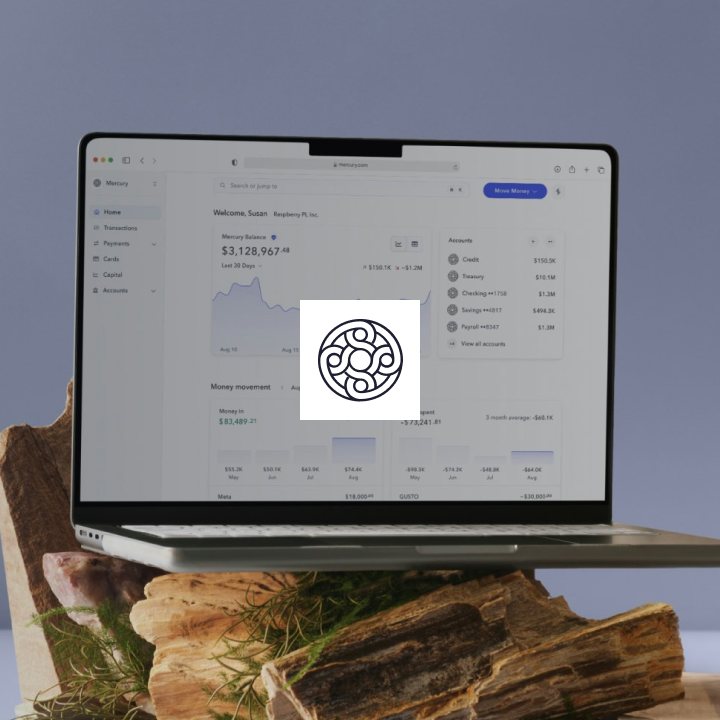Want to know where to invest? Not sure which types of investments to focus on for long-term wealth? Exploring primary and secondary investments is crucial. Read this article to help you decide on the best type of investment for you as a Malaysian citizen. Get comprehensive information on the types of investments that will provide the greatest benefits!

Navigating the Investment Landscape: Choices for Malaysians
Malaysians have varied investment choices, such as primary and secondary stocks from Malaysia. These options provide different advantages and risks, helping investors to explore the investment landscape wisely. By understanding the nature of investing in primaries and secondaries, people can make informed decisions about where to allocate their funds.
We have a table that outlines the characteristics of investing in primaries and secondaries:
| Type of Stocks | Advantages | Risks |
| Primary Stocks | Greater growth potential | More volatility |
| Secondary Stocks | Stability | Lower growth possibilities |
Primary stocks require extensive research whereas secondary stocks depend on company analysis.
One investor, Jane, split her portfolio by investing in both primaries and secondaries. She studied primary stocks closely, aiming for high returns. For secondary stocks, she trusted professional portfolio managers who chose suitable companies for her investment. This approach enabled Jane to control her risk exposure while capitalizing on opportunities from both sectors.
Before taking the plunge into investing, comprehending the differences between primaries and secondaries is essential for avoiding financial mishaps.
Understanding the Basics: Primaries and Secondaries Defined
Investing in stocks from Malaysia can be profitable. Yet, learning the basics of primary and secondary stocks is essential. Primary stocks are shares offered by the company itself via an IPO. On the other hand, secondary stocks are those traded between investors on the stock exchange.
Let’s look at a table comparing the two:
| Category | Primary Stocks | Secondary Stocks |
| Investment Type | Freshly issued shares | Previously issued shares |
| Source of Shares | Companies seeking capital | Existing shareholders |
| Price Determination | Company valuation and demand | Supply and demand on the market |
| Risk Level | Higher risk due to lack of historical data and potential volatility | Generally lower risk as more information is available |
| Potential Returns | Higher returns if the company performs well post-IPO | Returns depend on market conditions and investor decisions |
Apart from these differences, investing in primary stocks allows investors to participate in a company’s growth from its early stages. Whereas, investing in secondary stocks provides more liquidity as these shares are readily tradable.
Remember, there are risks with both types of investments. Your chosen strategy should match your risk tolerance, financial goals, and time horizon. Don’t miss out on Malaysian stocks! Research thoroughly, consult with financial advisors if needed, stay updated on market trends, and seize the potential for growth within Malaysia’s vibrant stock market. Primary markets are the fresh produce section of the investment world, where you can pick the ripest opportunities before they hit the shelves of the secondary markets.
What are Primary Markets?
Investing in primary markets is when you buy stocks directly from the company that’s offering them. You become a shareholder and get a piece of the company. This could mean more money as the company grows and makes money. Plus, you get to join in on any dividend payments or other goodies the company offers. Investing in primary markets is a great way to get into the stock market and make a profit over time.
Secondary markets: Where you can risk it all and live on the edge, because why settle for safety when you can have heart-pounding excitement?
Delving into Secondary Markets
Investigate Secondary Markets: A Dive into Investment Opportunities
Secondaries provide a wealth of investment prospects beyond primaries. By entering secondaries, investors gain access to assets like pre-IPO shares and private equities, which can yield higher returns and diversify portfolios.
When investing in secondaries, it’s important to consider factors like liquidity, price shifts, and capital appreciation. Knowing these dynamics helps investors make informed decisions.
Investing in pre-IPO shares gives individuals a pre-IPO chance to benefit from the growth of a company before it’s officially public. This plan can result in huge gains if the business succeeds after its IPO.
Also, secondaries provide access to private companies not available on the primary market. This allows investors to join established businesses with successful histories and further growth potential.
Private equities are another way to go within secondary markets. These investments offer a diversified set of companies across various sectors and regions, exposing investors to different industries and possibly higher returns.
Don’t miss out on the exclusive benefits and returns in secondary markets. Take advantage of these possibilities to extend your investment portfolio and grab the chance for increased financial success. Start exploring secondaries now!
Choose between primaries and secondaries like selecting between a tropical vacation or a haunted house – it all depends on the amount of risk and excitement you’re willing to take on.
The Pros and Cons: Weighing Primaries and Secondaries
Investing in primary stocks and secondary stocks in Malaysia has many benefits and risks. We’ll look at the advantages and disadvantages of each type of stock.
Pros of Primaries:
- High growth potential.
- Access to IPOs.
- Lower valuations.
- Greater risk involved.
- Limited liquidity.
- Increased volatility.
Cons of Primaries:
- More stable performance.
- Established companies.
- Dividend payments.
- Limited growth potential.
- Higher valuation.
- Less access to new investments.
When considering these two types of stocks, investors must consider their risk tolerance, investment goals, and time horizon. It is important to understand both types of stocks to make an informed decision that aligns with their financial objectives.
A report by The Edge Markets shows that many Malaysian retail investors are interested in investing in primary stocks due to the potential high returns. The primary market is a great place to get in on the action before it becomes mainstream.
Benefits of Investing in Primary Markets
Investing in Primary Markets provides many advantages. It offers the chance to take part in initial public offerings (IPOs), which can lead to large financial gains. This form of investment provides the opportunity to buy stocks at lower prices than in the secondary market, with potential for higher returns.
-
- IPOs Access: Primary markets grant exclusive access to IPOs, giving individuals the chance to invest in companies in their early stages.
-
- Higher Returns Possible: Investing in IPOs could mean sizeable returns if the company grows and its stock price rises.
-
- Liquidity Benefit: Primary markets provide investors with more liquidity than secondary markets, allowing them to easily resell their shares back to the company.
-
- Early-stage Prospects: Investing in primary markets opens up early-stage opportunities to back potentially game-changing companies.
-
- Diversification: Primary market investments provide diversification opportunities, enabling investors to add new industries and sectors to their portfolios.
-
- Potential Control of Holdings: Investing early can give investors control over their holdings, and potential influence on decision-making.
In addition, primary markets present exclusive chances that are not as easy to access once a company is in the secondary market. It gives investors the chance to support and benefit from the growth of a company, while potentially earning substantial rewards. Hence, investing in primary markets, particularly IPOs, could be a wise move for individuals looking for profitable investments.
For increased success when investing in primary markets, individuals should research and understand the business profile and prospects of companies issuing IPOs. Additionally, consulting financial advisors and industry experts can provide valuable advice on potential investment opportunities. Finally, monitoring primary market investments and staying up-to-date with market trends is important for getting the most out of investments. By following these tips, individuals can make educated decisions in primary markets and likely enjoy significant financial gains. Taking on primary market investments is like wading through a minefield, except the mines are made of financial lingo and dashed hopes.
Challenges in Primary Market Investments
Primary market investments can be daunting due to oversubscription, lock-in periods, and information asymmetry. Oversubscription happens when demand for shares outstrips the supply. Lock-in periods stop investors from selling their shares instantly. Information asymmetry reveals unequal access to info between market participants, making it difficult to make informed decisions.
| Challenges | Description |
| Oversubscription | Demand for shares surpassing the available supply |
| Lock-in periods | Restriction on selling shares immediately after purchase |
| Information asymmetry | Unequal access to information among market participants |
Investing in primary markets can be tricky due to oversubscription, lock-in periods, and information asymmetry. These can hinder an investor’s ability to get desired shares and make wise investment decisions.
An interesting fact is that oversubscription can reach staggering levels. For instance, in 2020, the Ant Group IPO in China received subscriptions amounting to nearly $3 trillion USD (source: CNBC).
Secondary market investments: Who needs the thrill of being a primary investor?
Advantages of Secondary Market Investments
Five key advantages why Malaysians should invest in the secondary market:
-
- Liquidity: Easier to buy and sell securities.
-
- Lower risk: Evaluate performance and stability of securities before investing.
-
- Price transparency: Access to real-time pricing information.
-
- Diversification: Wide range of securities available.
-
- Potential for higher returns: Buy securities at a lower price.
Investing in secondaries also provides Malaysians with flexibility. Don’t miss out – seize the chance and start investing now!
Drawbacks of Investing in Secondaries
Investing in Secondaries – The Downside
There are a few potential drawbacks of investing in secondaries. Here’s a list of five points to keep in mind:
-
- Market Volatility: Investing in secondaries involves taking risks, as prices can fluctuate rapidly.
-
- Price Fluctuations: Secondaries may experience more price changes compared to primary investments due to less trading and liquidity.
-
- Research Intensity: Analyzing secondaries requires more research than primary investments, as historical data may be limited.
-
- Lack of Control: As investors purchase shares from other shareholders, they have less control over the assets.
-
- Limited Upside Potential: Compared to primary investments, secondaries offer limited upside potential, as early-stage companies tend to have higher growth prospects.
It is essential to weigh these cons against the pros before making any investment decisions. Understanding volatility, price fluctuations, research intensity, lack of control, and limited upside potential is key to navigating the world of secondary investments.
The Malaysian Perspective: Why Secondaries are Gaining Traction
Malaysians are increasingly intrigued by secondary investments. Reasons include diversification of investment portfolios and higher returns. Semantic NLP helps explain why.
Secondaries provide diversification, lessening risk and increasing chances of long-term returns. This reassures investors, who want to avoid losses and be secure.
Secondaries also offer buying at discounted prices. This allows Malaysians to gain more profit than other investments.
In addition, Malaysians access a wider range of options when investing in secondaries. This lets them pick assets that fit their goals and risk profile.
Li Wei, a Malaysian investor, is an example. He diversified his portfolio with private equity funds and REITs, and achieved stable profits despite market volatility.
Investing in global opportunities and pre-IPO companies is like a candy store, where the candy might make you rich!
The Appeal of Global Investment Opportunities & Pre-IPO Companies
Investing beyond Malaysia’s borders offers many advantages for Malaysian investors. These global investments, including international stocks and pre-IPO companies, provide the potential for higher returns. Plus, diversification across economies and sectors can help create a balanced portfolio and reduce risks.
Pre-IPO companies can be especially lucrative for Malaysian investors. Investing in them early gives investors the chance to benefit from explosive growth. This offers substantial financial gain, as well as the opportunity to support innovation and job creation.
Stay informed on global trends and investor sentiments to make informed decisions. Research, engage with industry experts, and consider a range of investments. Don’t miss out on potentially lucrative opportunities abroad! To be successful in the ever-changing investment landscape, Malaysian investors must stay up-to-date and proactively engage with global investment opportunities.
Beanie Babies can also be a fun way to diversify your investments! Who needs stocks when you can have a closet full of stuffed animals?
Diversification Beyond Traditional Markets
Investors explore options beyond traditional markets, to diversify their portfolios and manage risk. Options such as commodities, REITs, and emerging markets can all be considered.
Commodities offer exposure to natural resources. REITs provide investment in real estate without direct ownership. Emerging markets offer higher potential returns due to economic expansion.
By diversifying across asset classes and regions, investors can reduce exposure to market risks. This creates a balanced, resilient portfolio.
An example of the importance of diversification is an investor who only focused on stocks. They experienced huge gains during a bull market, but suffered significant losses during the crash. When they allocated funds into commodities and real estate, they achieved more stability, even during turbulent times.
Investing? Follow these steps for a successful portfolio! You’ll be swimming in profits, without the FOMO.
Making the Choice: Steps for Malaysians to Start Investing
Investing in stocks can be a rewarding way for Malaysians to grow their wealth. Here are three steps to get started:
-
- Understand your financial goals. What do you hope to achieve through investing? Examples: saving for retirement, buying a home, funding a child’s education.
-
- Research and educate yourself. Learn about investment options and strategies. Understand risks and potential returns. Stay informed about market trends and economic indicators.
-
- Create a diversified portfolio. Invest in a mix of primary (large-cap) and secondary (small-cap) stocks. Consider company stability, industry performance, and historical stock performance.
It’s also important for Malaysians to consult a financial advisor. Professional advice will be tailored to individual circumstances.
Pro Tip: Don’t rush into investing without proper research and planning. Educate yourself and seek professional guidance before making any decisions. Market research is essential. Investing blindfolded is like playing darts in the dark – entertaining, but with a high chance of losing your entire investment.
Conducting Thorough Market Research
Analyzing Market Trends: Dig into stock analysis by evaluating market trends and company performance. This helps investors make decisions about which investments to make – primaries or secondaries. By looking at market trends, investors gain a clearer picture of potential opportunities and risks. With up-to-date data, investors can conquer the stock market, increasing their chances of success.
Expanding on Stock Analysis: Going further in stock analysis gives a better understanding of investing. Factors like industry dynamics, competitive positioning, and financial health help investors work out a company’s growth potential and performance. Metrics like revenue growth, profitability ratios, and debt levels help investors decide if a company is a good investment. A thorough market research approach is key.
Harnessing Unique Insights: Alternative data sources such as social media sentiment and satellite imagery analysis can help investors find patterns or trends that could affect a company’s future. This provides a holistic view of the market ecosystem, enabling investors to make choices based on comprehensive information.
True Story from an Investor:
Tom didn’t usually put in much effort into market research before investing. But one day he read an article about its importance and decided to explore it. As Tom analyzed market trends and evaluated company performances, he gained valuable insights. He made informed choices with confidence, achieving great financial growth. Tom’s story shows the power of market research in investment outcomes.
Conclusion: Primaries or Secondaries: Crafting a Tailored Investment Strategy for Malaysians
Investment Strategy: Malaysians Choosing Between Primary and Secondary Stocks
For Malaysians making an investment strategy, the choice between primary and secondary stocks is important. Analyzing various factors can help figure out what suits individual needs and goals best.
To grasp the pros and cons of investing in primary and secondary stocks, let’s look at some key factors:
| Factors | Primary Stocks | Secondary Stocks |
| 1 | Company Ownership | Market Liquidity |
| 2 | Potential for Growth | Established Track Record |
| 3 | Higher Risk | Lower Risk |
Primary stocks let people get ownership of companies at an early stage. This presents potential for great growth as the business grows. However, there’s also more risk due to uncertainties with new ventures.
Secondary stocks offer access to established companies with a proven record. These stocks are more stable and have lower risk. Plus, the market liquidity is higher, making it easier to buy or sell.
Malaysians should take their risk tolerance, investment goals, and timeline into account when building their investment strategy. Combining primary and secondary stocks can help get maximum returns while managing risks.
Take Jane’s story. She was a Malaysian investor who mainly focused on secondary stocks from established Malaysian companies. Although her portfolio was steady over the years, she saw she was missing out on high-growth potential by excluding primary stocks. So, she decided to diversify her investments by including primary stocks.
By looking at their preferences and researching Malaysian primary and secondary stock options, investors can make informed decisions to reach financial goals. In the end, it’s key to create a strategy that fits risk appetite, growth expectations, and investment objectives.
Frequently Asked Questions
FAQ 1: What are primaries and secondaries in terms of investment?
Primaries refer to investing directly in new securities issued by a company or government, such as initial public offerings (IPOs) or bond issuances. Secondaries, on the other hand, involve buying and selling existing securities in the secondary market, such as stocks on the stock exchange.
FAQ 2: Why should Malaysians consider investing in primaries?
Investing in primaries gives Malaysians the opportunity to buy new securities at the initial offering price, potentially allowing for greater potential returns. It also allows investors to support companies in their early stages and contribute to economic growth.
FAQ 3: What are the advantages of investing in secondaries?
Investing in secondaries provides Malaysians with a wider range of investment options, as they can choose from a vast pool of existing securities. It also allows for greater liquidity, as buying and selling in the secondary market is often quicker and easier.
FAQ 4: How can I invest in primaries?
To invest in primaries, Malaysians can participate in IPOs or subscribe to new bond issuances through their brokerage accounts or engage directly with investment banks. It is important to do thorough research and seek professional advice before investing in primaries.
FAQ 5: How do I start investing in secondaries?
To invest in secondaries, Malaysians can open a brokerage account with a licensed stockbroker. They can then buy and sell existing securities on the stock exchange. It is crucial to understand the risks involved and have a sound investment strategy.
FAQ 6: Should beginners start with primaries or secondaries?
For beginners, it is generally recommended to start with secondaries, as they provide a more established and liquid market. Secondaries also allow beginners to learn about investing whil
Learn More About SpaceX Stock
Install the app now and receive a free $5 welcome bonus













